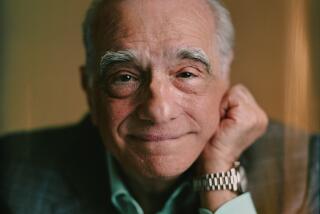The Quest for Crusoe
- Share via
Alone on a desert island. That’s been a favorite subject of fantasies, stories, vacation promotions and cartoons--not to mention a Tom Hanks movie. And we owe it all to Daniel Defoe, whose “The Life and Strange Surprizing Adventures of Robinson Crusoe” became an instant bestseller when it was published in 1719.
But to what or whom did Defoe owe it all? That’s the question that Tim Severin sets out to answer in his new book, “In Search of Robinson Crusoe.” An Ireland-based seafaring journalist and filmmaker, Severin has made a career of re-creating ancient voyages in period craft: sailing a leather boat across the Atlantic, a la St. Brendan, and taking a dhow from Muscat to China in the wake of Sinbad the Sailor, to name just two. Blending travel narrative, maritime history and a literary mystery, he explores potential Crusoe isles, pores over the exploits of 18th century pirates, deftly pieces together clues in obscure book lists and has a few adventures of his own.
Conventional wisdom puts Crusoe’s goatskin cap firmly on the head of one Alexander Selkirk, a cantankerous Scottish sailing master who was marooned on uninhabited Juan Fernandez Island, a well-known stopping place for ships 400 miles off the west coast of South America. Selkirk hardly expected to spend four years as a castaway, but he did, making his home in a cave, subsisting on goats and wild turnips and plugging his ears to the roars of the seals and sea lions that crowded the beaches.
The tale of Selkirk’s rescue by privateers caused a public sensation when he returned to London in 1711, and several accounts were published, though none by Selkirk himself. Some 250 years later, the island’s association with the fictional castaway was “officially” sealed when Chile renamed Selkirk’s sanctuary, now the home of lobster fishermen and the destination of occasional literary tourists, Isla Robinson Crusoe. (Not everyone accepts this designation: Residents of the Caribbean island of Tobago also claim the honor, pointing to Defoe’s siting his isle near the mouth of the Orinoco River. And why did Severin’s publishers use a cover photo of Seychelles? Were they surreptitiously plumping for a spot in the Indian Ocean?)
Selkirk may have provided Defoe’s inspiration, but as for the actual prototype of a castaway and an accurate location for the island, well, on those scores Severin is skeptical of the “genuine” Selkirk sailor’s chest and coconut drinking cup he saw in an Edinburgh museum.
A trip to Juan Fernandez Island allows Severin to weave together his own experiences (including a night camped out uncomfortably close to a colony of sea lions) with a comparison of the island to Defoe’s fictional one and with tales of pirate castaways who would betray their comrades for a greater share of plunder. In fact, among the surprises of “In Search of Robinson Crusoe” is the sheer number of adventurers in the 1600s and 1700s who found themselves marooned and who lived to tell their tale.
There are several more ports of call on Severin’s itinerary: In the ramshackle villages of Nicaragua’s mangrove-lined Mosquito Coast (recently the haunt of drug smugglers and Contra operatives), he goes looking for traditional sailors and turtle hunters who could easily have stood in for Crusoe’s Man Friday. Then, piecing together histories Defoe might have known about (from a catalog of his private library), Severin follows the trail to Panama, where the lifestyle of today’s Kuna Indians prompts more stories of double-dealing buccaneers trudging through the rain forests of the isthmus and a doomed 18th century utopian Scottish settlement.
Finally Severin sets sail from Grenada aboard a 99-year-old gaff-rigged fishing boat (no radio, no electric power), bound for Salt Tortuga, a tiny desert island off the coast of Venezuela. It was there in the late 1600s that one Henry Pitman, ship’s surgeon and escaped convict, was shipwrecked. Pitman eventually managed to escape, return to London and chronicle his misadventures in an obscure pamphlet. (More about that in a minute.) Severin’s last landfall, meanwhile, brings him to Grand Cayman and a visit with a fisherman who still vividly remembers being marooned on a reef in a hurricane in 1932. In that octogenarian we get a glimpse of the relentless determination that must have kept all those historical castaways alive.
As for Pitman ... well, that’s where Severin’s penchant for literary sleuthing emerges. Tracking down the surgeon’s little booklet, he discovers some intriguing parallels with Robinson Crusoe’s novelistic adventures and some tenuous--but credible--connections to Defoe himself.
But does it really matter where Defoe got his ideas for Crusoe? From Selkirk or Pitman or one of the other unfortunate mariners of that bygone era? I don’t think so. Defoe turned the tales into art. And Severin does the same with his own adventurous travels, proving along the way the staying power behind the story of a castaway on a desert isle. It’s a fascinating read, and something to ponder the next time you head for a beach.
More to Read
Sign up for our Book Club newsletter
Get the latest news, events and more from the Los Angeles Times Book Club, and help us get L.A. reading and talking.
You may occasionally receive promotional content from the Los Angeles Times.










